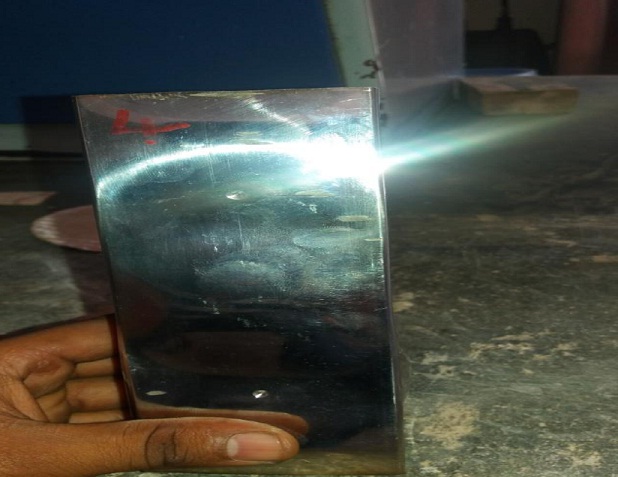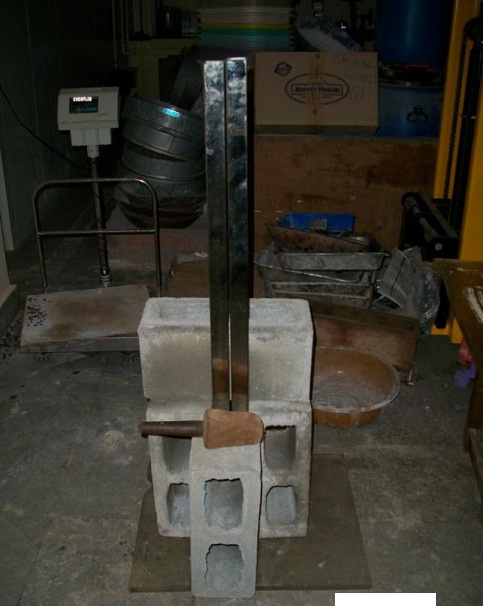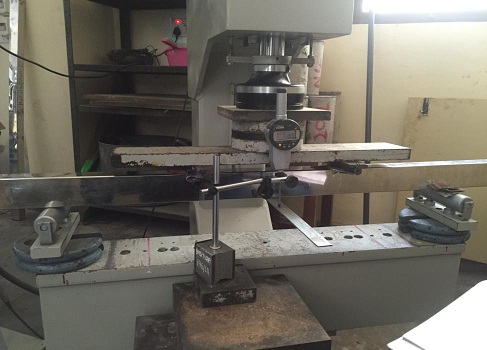





Published on Nov 30, 2023
Reinforced cement concrete is one of the most versatile and most commonly used construction material and it's discovery has been a boon to mankind. It essentially consists of providing reinforcement in the form of twisted steel bars of varying diameter in the concrete element to enhance its tensile strength. Structural hollow sections made of steel make the most efficient compression members, filling them with concrete gives further advantages, some of which includes, higher load carrying capacity, reduced sectional dimensions resulting in slender members etc. These hollow sections have an added advantage of not needing of any formwork during the casting and installation as well as there are no requirement of fabrication of the reinforcements which in turn reduce the labor work and cost.
Another advantage of such sections is that concrete, which is susceptible to fire hazards is not exposed to the environment but the drawback here is the exposure of steel to the environment can result in corrosion which can be easily tackled by coating the steel member with suitable anti-rust or anti-corrosive coatings. In modern construction, especially in the housing sector use of precast elements has become increasingly popular. These elements can also be used as precast members for repair purpose in case of damage to the structure due to various reasons such as natural calamities like earthquakes, old and dilapidated structures of archeological importance etc, popularly known as retrofitting and rehabilitation of structures etc,. In this project, we mainly aim in confining concrete into hollow steel tube, this confinement of concrete in the steel tubes also provides lateral stability to the elements which in turn increases the load carrying capacity, its flexural stiffness and rigidity. These specimen tubes are then compared with hollow specimens of same dimensions in terms of their flexural strength, compressive strength, finite element analysis is carried out and the corresponding graphs are plotted.
Keywords : Concrete, Reinforced cement concrete, steel bars
Steel members have the advantages of high tensile strength and ductility, while concrete members have the advantages of high compressive strength and stiffness. Composite members combine steel and concrete, resulting in a member that has the beneficial qualities of both materials. Here the strength and elastic properties of such beams will be studied. The behavior of concrete in-filled tubular sections under shear, flexure as well as compression will the studied. The theoretical analysis of such beams will be carried out by the finite element analysis method.
All types of cement complying with Indian Standards are suitable for making concrete. The choice of the type of cement and content depends on the strength requirements, the exposure class for the durability and the minimum amount of fines required for the mix.
Sand plays a very important role in concrete. It manages to fill the voids between the powders and coarse aggregates. That is why sand must be well graded from a particle size point of view, in order to guarantee the filling between the various aggregates as much as possible, sand can be finer than normal, as the material less than 150 micron may help increase cohesion, thereby resisting segregation.
Concrete can be made from most normal concreting aggregates. Coarse aggregates differ in nature and shape depending on their extraction and production. SCC has been produced successfully with coarse aggregate up to 40mm. The maximum size depends on reinforcement layout and formwork dimensions in the same way as traditional vibrated concrete. Natural aggregates require less water than crushed aggregates in SCC. However, elongated aggregates are not suitable. Here due to specimen size constraints, the maximum size of aggregates is restricted to 12.5mm downsize.
Potable water as obtained from Bore well was used for the preparation of concrete mix and for curing as per Indian Standards.
Admixtures are essential in determining flow characteristics and workability retention. Super plasticizers are an essential components SCC to provide the necessary workability. Other types may be incorporated as necessary, such as Viscosity Modifying Agents (VMA) for stability, Air Entraining Admixtures (AEA) to improve freeze-thaw resistance, retarders to control of setting, etc. Other materials may indicate the requirement for additional segregation control admixtures such as ultra fine silica, polysaccharide gum, modifying polyether or even simple airentrainers.
When the slump is over 175mm the bleeding increases too much. With the advent of super plasticizer, flowing concretes with slump level up to 250mm were manufactured with no or negligible bleeding, provided that an adequate cement factor was used. In the middle of 1970’s, it was suggested to define rheoplastic a concrete that, besides being very flowable, is also very cohesive and therefore has a low tendency for segregation and bleeding. The most important basic principle for flowing and unseggregable concretes including SCC’s, is the use of super plasticizer combined with a relatively high content of powder materials in terms of Portland cement, mineral additions, ground filler and very fine sand.
A partial replacement of cement by fly ash was soon realized to be the best compromise in terms of rheological properties, resistance to segregation, strength, and crack freedom particularly in mass concrete structures exposed to restrained thermal stresses produced by cement hydration. Special attention was used in selecting coarse aggregate with maximum size smaller than 20mm (preferably smaller than 15mm), in order to enhance the mobility of all the concrete ingredients without any significant segregation affects. It was decided to use poker vibrators initially, to ensure the concrete was adequately under and around the bottom mat of reinforcement. At the end it was considered unnecessary to continue the vibrating of concrete, as the super plasticizer produced flowing concrete that was self-compacting in nature.
The apparently large volume of displaced water showed the self-compacting property during the pour that finally had to pump away to allow surface finishing- off to proceed. Conventional SP such as those sulphonated melamine and naphthalene formaldehyde condensates, at the time of mixing becomes absorbed onto the surface of cement particles. This absorption takes place at a very early stage in the hydration process. The sulphonic groups of the polymer chains increase the negative charge on the surface of the cement particles and dispersion of cement occurs by electrostatic repulsion. Polycarboxylic ether based super plasticizer has long lateral chains. This greatly improves cement dispersion. At the start of the mixing process the same electrostatic dispersion occurs as described previously, but presence of laterals chains, linked to the polymer backbone, generate a steric hindrance, which stabilizes the cement particles capacity to separate, and disperse.
Stainless steel rectangular hollow tubes having the following characteristics is used for the all the experiments:
Grade of steel : 202
Tensile strength : 515Mpa
Elastic modulus : 207GPa
Poisson’s ratio : 0.27
The specimen was 6.5m factory made. This was later cut into four specimens of 1.2m length for flexure tests and 0.2m for compression tests.
Two hollow specimens were prepared for compression test.
The gross length of the specimens was 0.2m and the gauge length was fixed to 0.1m to accommodate the dial gauge(Fig. 1) Indents were made into the specimens to enable for the fixing of the De-mech gauge(Demountable Mechanical gauge). This gauge is used for getting the deflection of the specimen under loading.
Two hollow specimens were prepared for flexural testing.
The gross length of the specimens was 1.2m and had an effective length of 0.9m(Fig. 2)
A thin metal strip was attached at the mid span to facilitate for fixing of the dial gauge required to record deflections during the load application.


It should be appreciated that although these combinations of tests measure the flow and passing ability, the results are not independent. The measured flow is certainly affected by the degree to which the concrete movement is blocked by the reinforcing bars. The extent of the blocking is much less affected by the flow characteristics, and we can say that clearly, the greater the difference in height, the less the passing ability of the concrete. Blocking and/or segregation can also be detected visually, often more reliably, than by calculation.
Note: The results of the J ring are influenced by the combination method selected and results obtained from different combinations will not be comparable.
The test was developed in Japan and used by Ozawa Et Al (5). The equipment consists of a V-shaped funnel, shown in figure. An alternative type of V-funnel, the O funnel, with a circular section is also used in Japan. The described V-funnel test is used to determine the filling ability (flowability) of the concrete with a maximum aggregate size of 20mm. The funnel is filled with about 12 liters of concrete and the time taken for it to flow through the apparatus measured. After this the funnel can be refilled with concrete and left for 5 minutes to settle. If the concrete shows segregation then the flow time will increase significantly.
Though the test is designed to measure flowability, the result is affected by concrete properties other than flow. The inverted cone shape will cause any liability of the concrete to block to be reflected in the result –if, for example there is too much aggregate. High flow time can also be associated with low deformability due to a high paste viscosity, and with high inter-particle friction. While the apparatus is simple, the effect of the angle of the funnel and the wall effect on the flow of concrete are not clear.

It is found out that both hollow as well as in-filled specimens have their own merits as well as demerits.
It can however be noted In-Filled specimens displayed higher load carrying capacity when compared to hollow specimens.
Similarly In-Filled specimens has a higher Strain Energy capacity when compared to Hollow specimens.
In-Filled specimens failed by cracking off of the tensile face when subjected to flexure testing, when compared to hollow specimens which failed due to local buckling at the points of loading as evident from the photographs taken during the testing process.
Seismic Behaviour Of Concrete Filled Steel Tubular Beams: E K Mohan raj*, Kongu Engineering College, India, S Kandasamy, Anna University Tiruchirappalli, India, A Rajaraman, Indian Institute of Technology Madras, India
Behavior Of Concrete In Filled Duplex Stainless Steel Circular Columns And Beams: Sunusi Aminu Yunusa, Thesis for: M. Tech structural engineering, Department of Structural Engineering, SRM University, Chennai.
Concrete-Filled Circular Steel Tubes Subjected To Pure Bending: M. Elchalakani, X.L. Zhao, R.H. Grzebieta
Analysis Of Concrete Filled Steel Tubular Beam-Columns: W. F. Chen, C. H. Chen